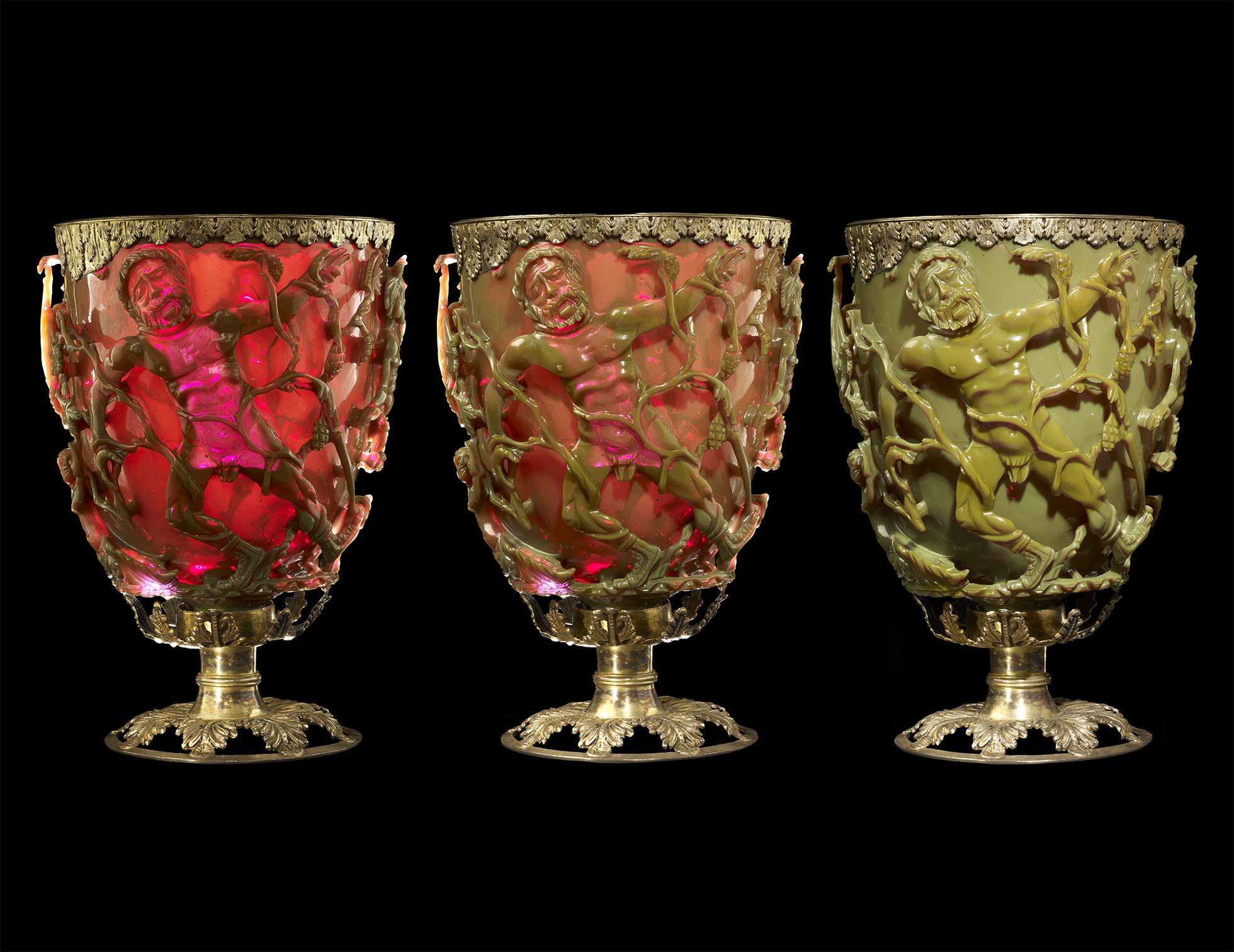The ancient world has long been a source of fascination and inspiration for modern-day scientists and researchers. Recently, a remarkable discovery has shed new light on the technological prowess of the Roman Empire, challenging the notion that our ancestors were primitive in comparison to today’s standards. The Lycurgus Cup, a 1,600-year-old Roman chalice, has captivated the scientific community with its remarkable color-changing properties, revealing the Romans’ mastery of nanotechnology.
The Lycurgus Cup: A Technological Marvel

The Lycurgus Cup, named after its depiction of a scene involving King Lycurgus of Thrace, is a jade green Roman chalice that undergoes a remarkable transformation in color depending on the direction of the light. When illuminated from the front, the cup appears jade green, but when lit from behind, it takes on a mesmerizing blood-red hue. This color-changing effect had baffled scientists since the cup’s acquisition by the British Museum in the 1950s, until researchers in England finally unraveled the mystery in 1990.
The Secrets of Nanotechnology

Upon closer examination of the cup’s broken fragments under a microscope, researchers made a groundbreaking discovery: the Roman artisans had impregnated the glass with particles of gold and silver, each measuring just 50 nanometers in diameter – less than one-thousandth the size of a grain of table salt. This level of precision and craftsmanship is nothing short of astonishing, as archaeologist Ian Freestone of University College London notes, “It’s an amazing feat.”
The color-changing effect is the result of the vibration of the metal flecks when hit by light, which alters the perception of color depending on the observer’s position. This sophisticated understanding and manipulation of nanoparticles demonstrates that the Romans were pioneers in the field of nanotechnology, long before the modern scientific community even recognized its potential.
Unlocking the Potential of Roman Nanotechnology

The implications of this discovery are far-reaching, as the super-sensitive technology used by the Romans may have numerous applications in the modern world. Gang Logan Liu, an engineer at the University of Illinois at Urbana-Champaign, has recognized the untapped potential of the Lycurgus Cup’s color-changing properties. By creating a plastic plate filled with gold or silver nanoparticles, similar to the ancient chalice, Liu and his colleagues have developed a prototype that is 100 times more sensitive to changes in salt levels than current commercial sensors.
This groundbreaking technology may one day find its way into handheld devices used to detect pathogens in bodily fluids or to thwart attempts by terrorists to smuggle dangerous liquids onto airplanes. The potential applications of this ancient Roman nanotechnology are truly exciting, as scientists continue to uncover the secrets of our ancestors’ ingenuity.
Lessons from the Past

The Lycurgus Cup is not the only example of Roman technological superiority over modern-day standards. Scientists studying the composition of Roman concrete, which has remained submerged under the Mediterranean Sea for the last 2,000 years, have discovered that it is more durable and less environmentally damaging than the concrete we use today. This knowledge is now being utilized to improve the quality and sustainability of modern concrete.
Conclusion
The Lycurgus Cup stands as a testament to the technological prowess of the Roman Empire, challenging the notion that our ancestors were primitive. This remarkable chalice, with its color-changing properties, reveals the Romans’ mastery of nanotechnology, a field that is only now being fully explored and exploited. As scientists continue to uncover the secrets of Roman ingenuity, we are reminded that the past can hold the key to unlocking the technological breakthroughs of the future. The Lycurgus Cup serves as a humbling reminder that sometimes the solutions we seek can be found in the achievements of those who came before us.
